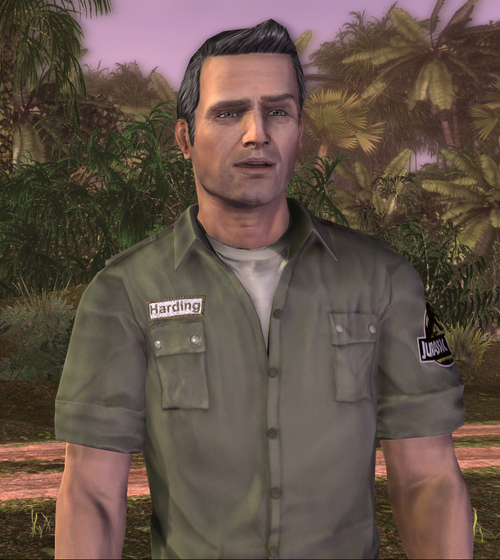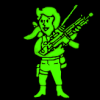Lesson II: Conflict, Continuity and Character Development
In the previous blog entry, I’ve described how to tackle theme, atmosphere and narrative forms. If you haven’t read it, please do because I might refer to terms used in that entry without further explaining in this entry.
Now, you have your theme all sketched out, you know which perspective you’re going to use in your story and you even have a couple of story elements you want to see in your story. But that’s only a tenth of the total work. A lot of writer’s may avoid a lot of writer’s blocks if they can pay attention to the following point: the story’s central conflict. Some may decide upon this before even getting started, filling out the bullets in the previous entry based off the central conflict, but that is entirely up to you to decide. Personally, I prefer to pick a conflict after knowing where I want my story to take place. Without further rambling, let’s dive into it.
Types of conflict
There are many different types of conflicts to choose from. I usually make two very distinct types when trying to decide what to focus on:
-Internal conflict;
-External conflict.
These should not require a lot of explanation, but just to be clear: an internal conflict is a conflict where the protagonist struggles with himself or causes the problems himself and must fix it for himself. An external conflict is a conflict which was not started by the protagonist, but still affects him, and he must solve the problem presented either for himself or a higher purpose.
Aside from my two main categories, there’s also central conflicts and side conflicts. The central conflict is what you should write on the back of the book: this is what the entire story is about, solving this conflict. Side conflicts are little things you can insert at will if you want to add more life to the story by not having the entire world revolve around the central conflict. Things such as a romance, feuds in the family and other hardships which do not necessarily spring from the central conflict, but affect it in some way (do not insert a completely random side story which only distracts from the central conflict).
Theme and conflict
Theme and conflict should go hand-in-hand. It is best to have a conflict fitting the setting of your story. So if you want to make a story about two people who fall in love, reconsider having it set during the Crusades, unless this love story is affected by the age and space of the Crusade-era Middle East.

The movie Blood Diamond is set in Sierra Leone during the ongoing conflict. The central conflict is about a valuable blood diamond which has to be smuggled out of the country. Side conflicts include Danny (Leonardo DiCaprio) struggling to keep his smuggling business going, as well as Solomon (Djimon Hounsou) being hunted by rebels. This story could only be set in modern day West Africa.
Whether you pick the theme first and base the conflict on that or the other way around is up to you. Personally, I prefer the first. What is important is to make sure all conflicts you toss in fit together. In the abovementioned example Blood Diamond, all side conflicts drive the central conflict and reinforce it.
Continuity
Another important thing to keep in mind is continuity. Modders among you will know the term “lore friendly”, which is basically a synonym for continuity. In its essence, continuity means that events, details and generally everything in your story fits in with everything stated before. These things can range from large things such as past events, you don’t want to mess up who was involved and the date if stated. But also small things add to continuity, something as simple as the clothes someone wears in a certain scene are continuity elements. If you mess up somewhere in here, the perceptive reader, viewer or gamer will call you out on this issue, no matter how small.


Jurassic Park: The Game had a continuity error with Gerry Harding, where a missing moustache from the movie character in the game adaptation was quickly called out by viewers and players who paid enough attention.
The best way to prevent continuity errors is to write complete scenes at a time and to re-read every once in a while to make sure you still have all the details right in the scene you’re working on. For larger elements, such as major events, it could be wise to keep a timeline in a separate document, listing all the important facts and dates you’ve inserted into the story.
Character development
This might be a bit of a tricky part. The bottom line is: good stories offer character development. Throughout the events in your story, it is nearly impossible for a realistic character not to be influenced by events. For example: if your story is about a man witnessing a murder, he is undoubtedly going to be shaken, becomes more frightened or bitter and untrusting. But there are two sides to character development: too little makes for a somewhat unbelievable story, too much may distract the reader from remembering where the protagonist began.
Character development isn’t solely restricted to the protagonist, however. Important side characters usually go through this process as well. Again, make sure you find the balance between the change in character being noticeable, but not too much. Side characters usually change less severely than the protagonist, for obvious reasons.

The series Breaking Bad shows a prime example of character development, with the protagonist changing many of his characteristics and attitudes throughout the series’ runtime. At the end, however, you still know where he started, as he has retained some prominent traits from that time.
A good way to insert character development over time is to change a single trait at a time. Like Breaking Bad (minor spoilers ahead) Walt’s appearance alone shows how to do this. First, he loses his hair on his head, then grows the beard and finally (and most extreme) his face becomes more ravaged and bitter throughout the series. Aside from this, Walt continuously adopts traits of the people he deals with along the way. Just watch the way he drinks his whiskey throughout the seasons, you’ll notice he eventually has it on the rocks. These little things are barely noticeable on their own, but add them all together and Walt goes from a family man to Heisenberg over the course of four seasons.
That was everything for now, but just to sum up everything I’ve told you guys in this entry:
Conflict
-Any story should have a central conflict which drives the entire work.
-Side conflicts are a good way to bring more life and realism, but if they’re too random, they do not contribute to the story.
-It is best to have a conflict which matches the theme you want to have your story set in.
Continuity
-Even the smallest error will be called out eventually.
-Writing an entire scene in one go can help reduce discontinuities.
-A good way to keep track of important dates and events is by keeping track of them in a separate timeline.
Character development
-The main character should always go through some sort of development.
-Important side characters usually do as well, but not as much as the protagonist.
-The changes must be noticeable, but not too much, as this can be unrealistic or distracting.
-A good way to insert development is by implementing small changes at a time.
-The longer your story, the longer this development can take, or the more your characters can change over the course of your story.



0 Comments
Recommended Comments
There are no comments to display.